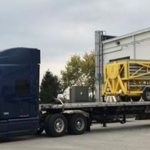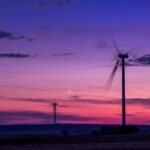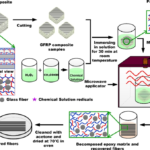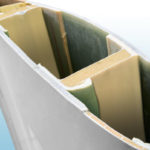In mid-September, Hurricane Maria caused major devastation to Puerto Rico and knocked out the island’s power grid. The majority of Puerto Ricans are still without electricity. While rebuilding will be a long-term effort, a solar photovoltaic (PV) mobile electric generator is helping restore power to the US territory. This portable solar solution, the Sun Commander Series 8000 from Day & Night Solar (DNS), is powering the construction sites where permanent renewable energy sources are being built. The expansive retractable array framework of the Sun Commander generator is formed from composites produced via pultrusion utilising a Covestro polyurethane system. Creative Pultrusions pultruded the polyurethane used for the generator’s framework. Utilising the pultruded polyurethane composite enabled DNS to slash the weight of the Sun Commander Series 8000 generator by 0.5 tons, according to DNS. Strong, yet lightweight polyurethane composites will not rot or rust and are very resistant to corrosion. Given the coastal environment, traditional materials may deteriorate when exposed to salt spray and high humidity. Polyurethane composites are also non-conductive, eliminating the need for grounding, which is especially important for this application. The Sun Commander Series 8000 generator moves between construction sites throughout Puerto Rico, pulled behind a standard pickup truck. The solar array consists of 36 x 260 W all-glass panels, creating a total DC system size of 9.36 kW. When not in off-grid use, the generator can be connected to an existing electrical system, helping to reduce the demand on that system by pumping power back into the grid. Based on the success of the Sun Commander generator, DNS has expanded its product line with the Sunpoly, according to Bob Eaton, DNS Managing Partner. “The Sunpoly system is a new, ground-mounted solar racking system manufactured almost entirely from polyurethane composite materials, a first in the industry,” he explains. The lightweight Sunpoly system supports a pair of 72-cell solar panels in portrait mode and can withstand winds up to 185 miles per hour. Its corrosion-resistant properties help it withstand all types of environments for years of low maintenance service. “Advanced polyurethane composites are an ideal fit for solar technologies due to their lightweight, non-conductive and rust-resistant properties, and are far superior to traditional materials,” says Eric Denison, Vice President of Polyurethane Systems, Covestro. “Sustainability is a core part of our mission at Covestro, and we’re proud that DNS continues to use our materials to help advance the adoption of renewable energy sources.”













